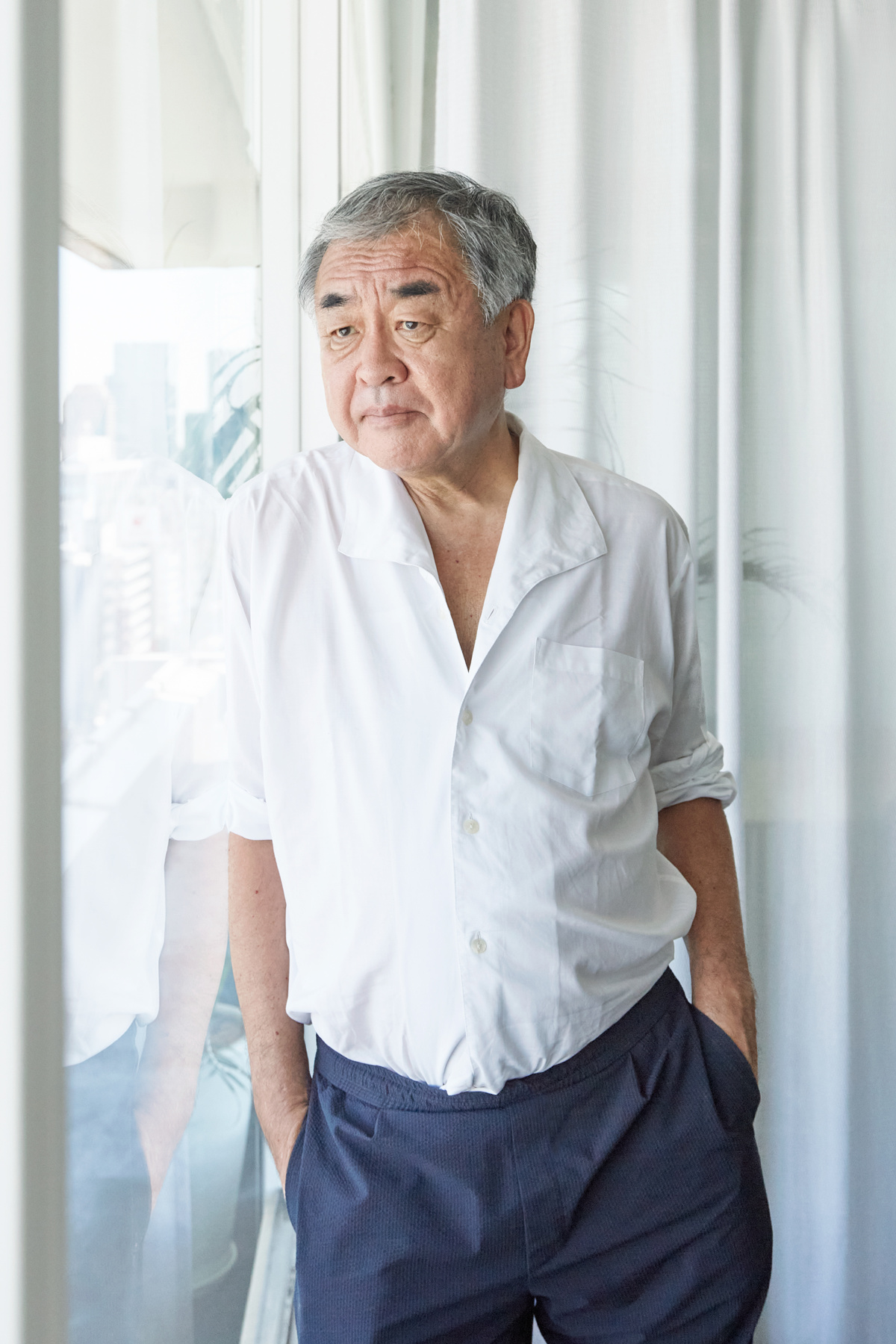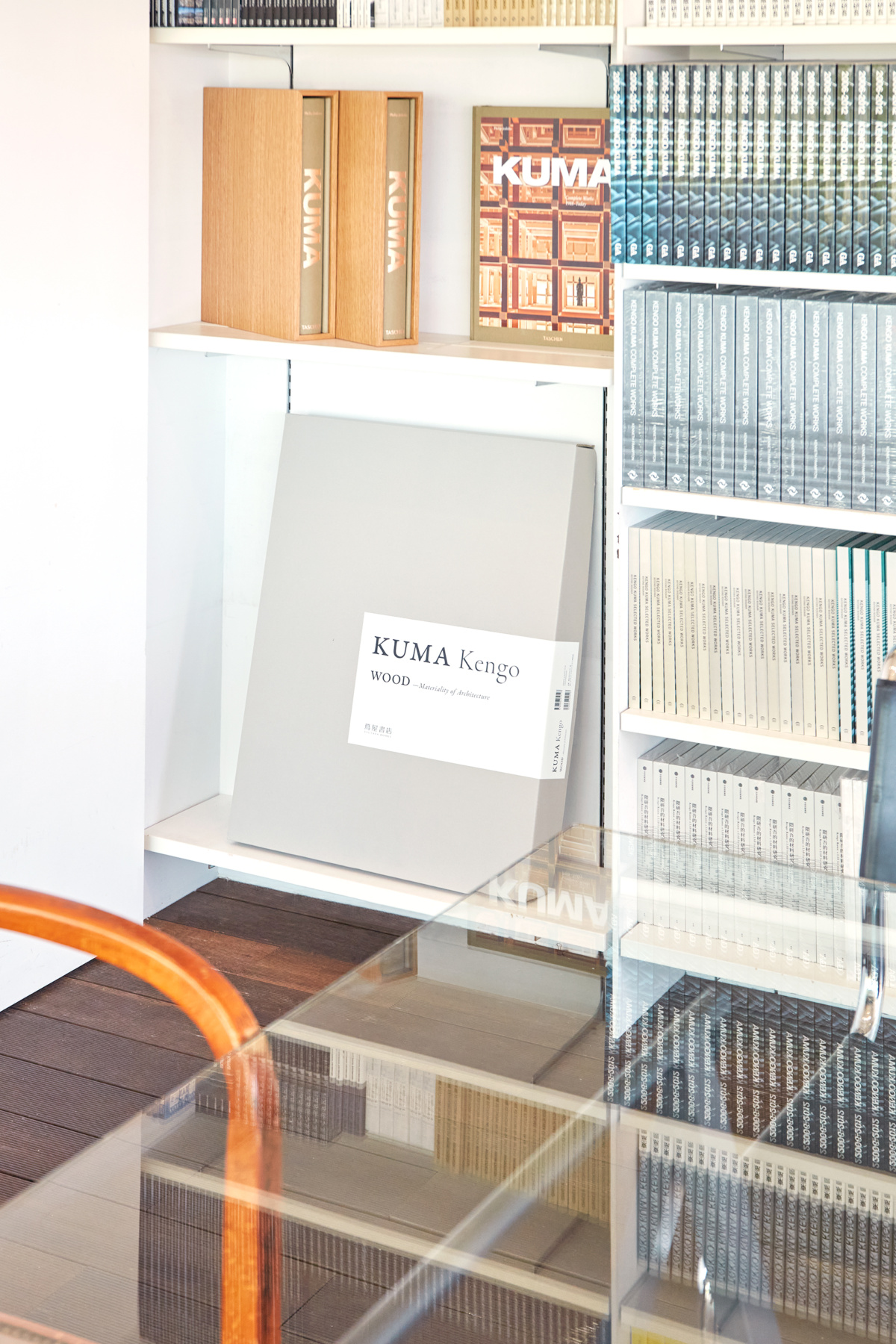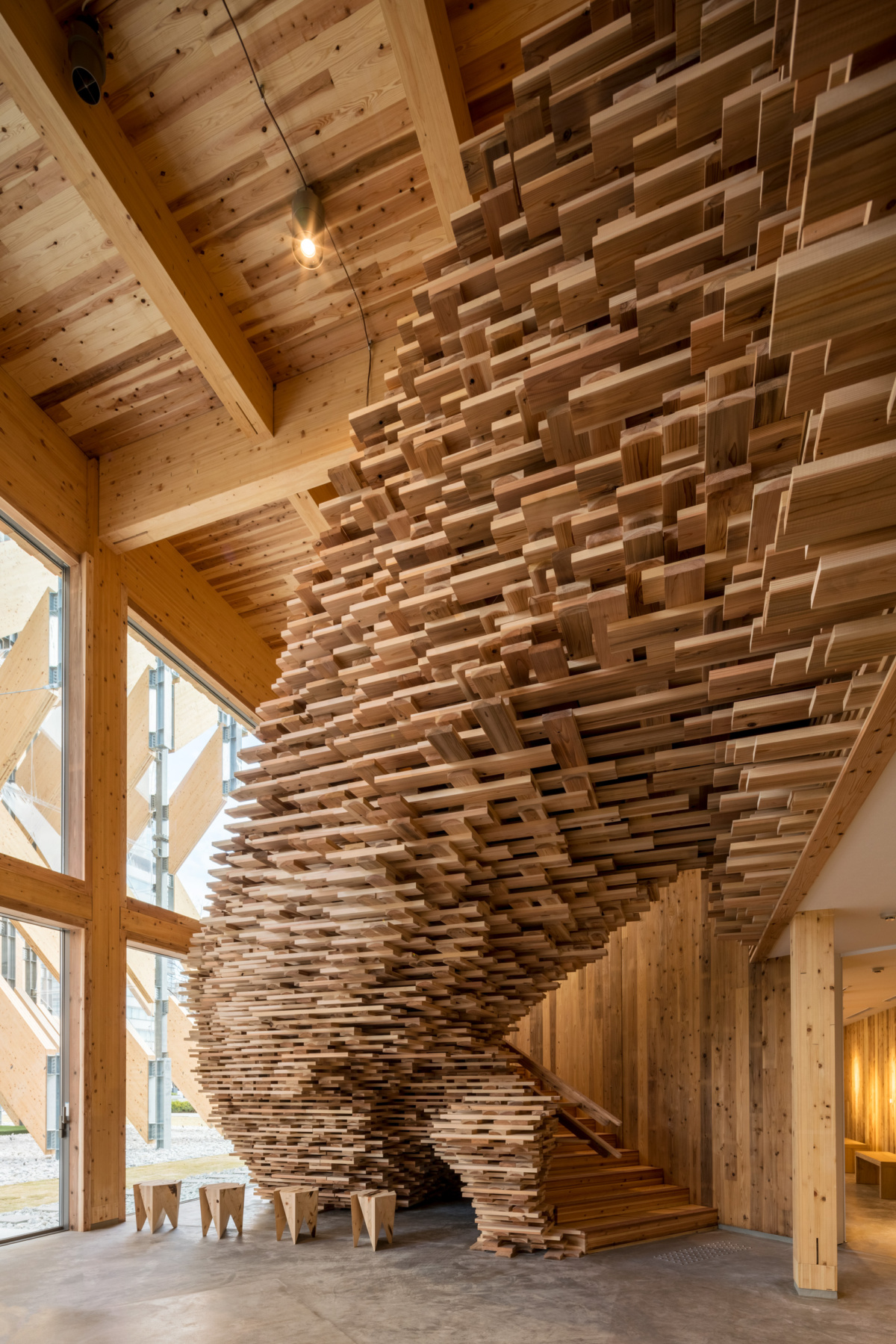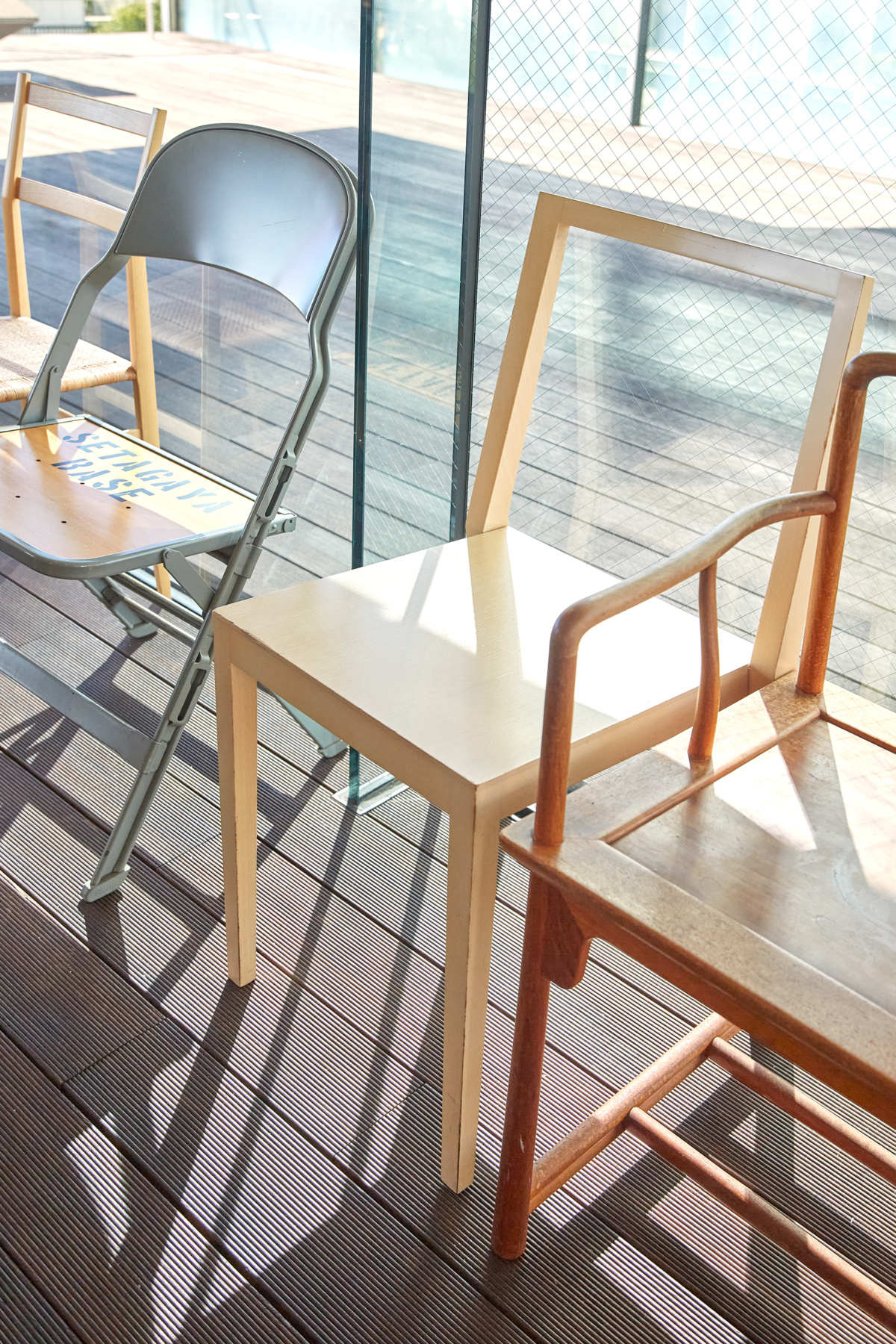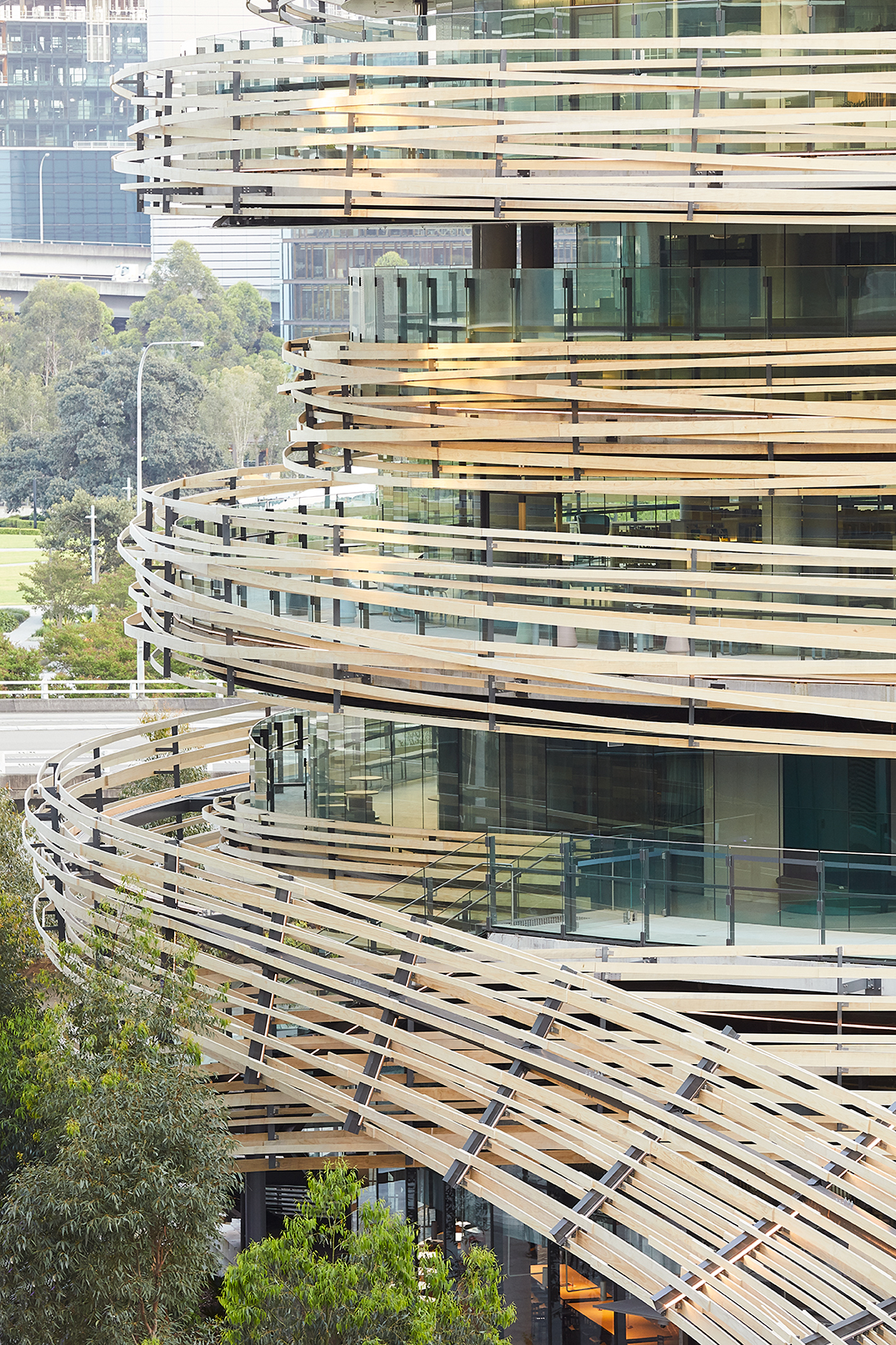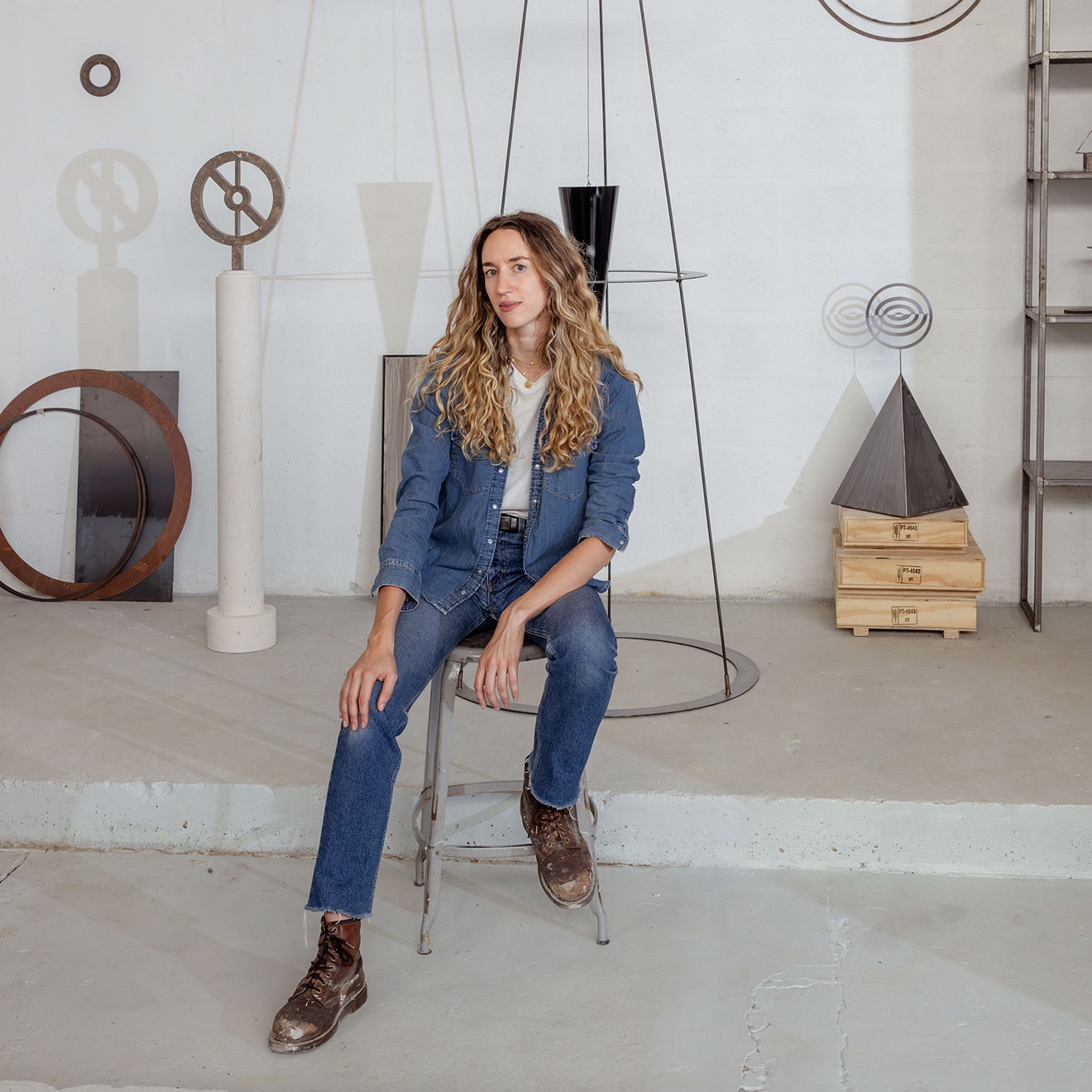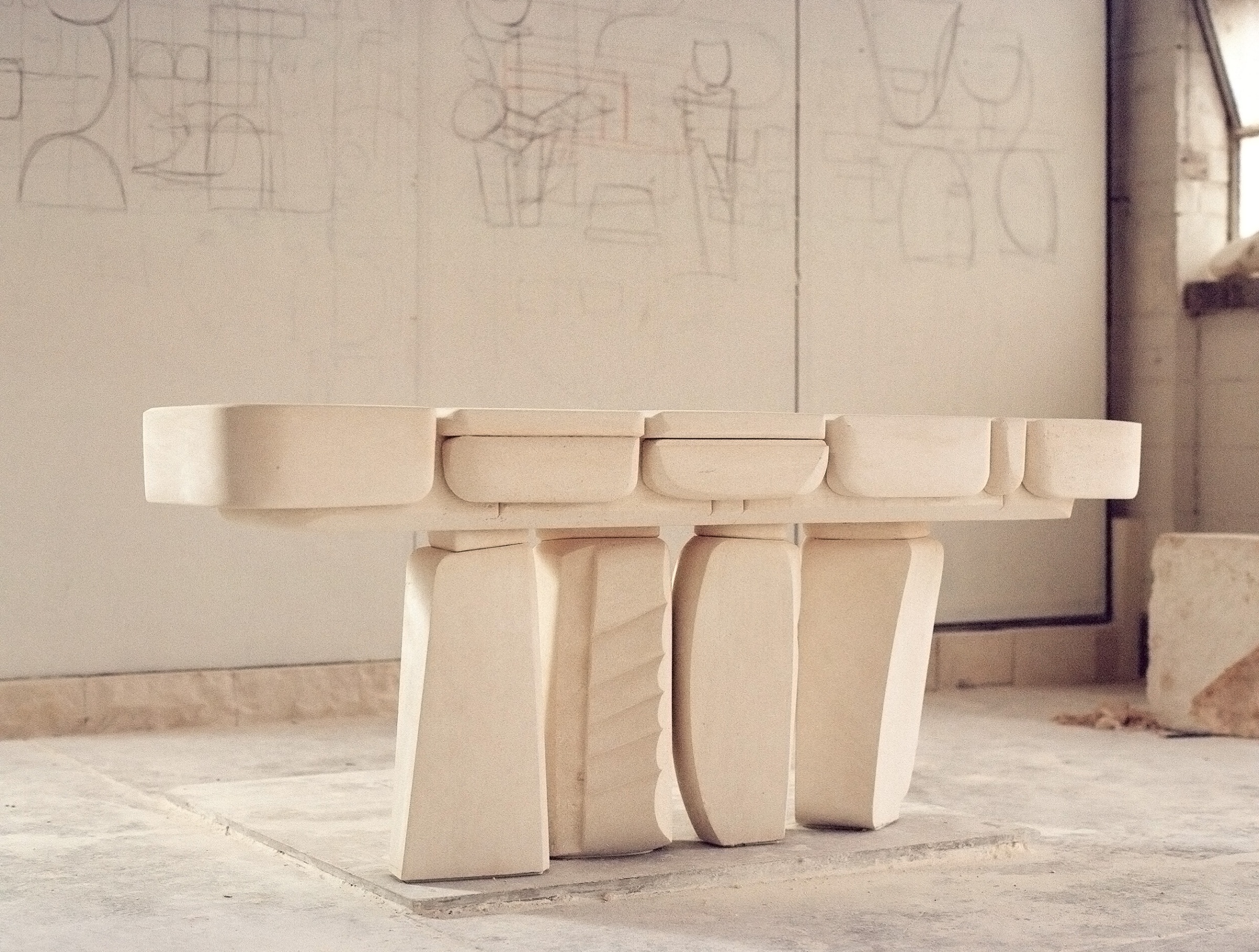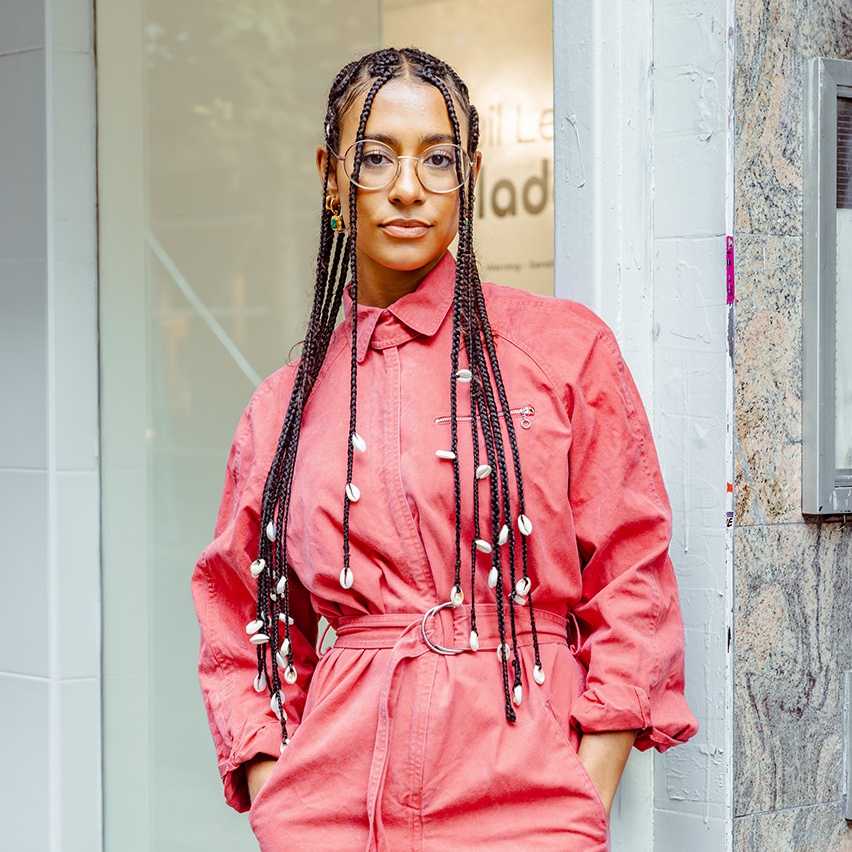Kengo Kuma is in constant communication with his staff. “My daily schedule is small meeting to small meeting, basically five to 10 minutes each, and there are many, many small meetings,” says Kengo. In the morning, a line snakes to his tiny corner alcove for “Kuma check,” where he looks at the work of his associates and gives them comments and direction. “I have to get in close communication with my colleagues. And communication is very important for design.”
Kengo’s desk is in a tiny alcove on the third floor of his three-story office building By-Cube, unobtrusive, and taking up only a few square meters of space. Books overflow from shelves reaching almost to the ceiling, making a paper fortress. The plate glass window that makes up one side of the space frames a stand of feathery bamboo, lining the path to the temple and cemetery next door.
The humble office and small desk belies Kengo’s influence. KKAA, Kengo Kuma and Associates, has more than 300 employees in Tokyo, Paris, Beijing, and Shanghai, with additional floors in the adjacent Aoyama Tower Building. KKAA is working on projects all over the world. The most famous of these might be the 2020 Tokyo Olympic Stadium—a billion-dollar project with a capacity of more than 60,000 people, but KKAA’s projects span the globe. Examples include the new Hans Christian Andersen Museum in Denmark, The Exchange in Australia (it looks like pastry mid-whisk), the Portland Japanese Garden Cultural Village, and back home again to the Haruki Murakami Library. Kengo’s buildings are often accented with organic-looking patterns, as if the bones of the buildings have become exoskeletons, at turns spiky, ridged, and whorled.
- Kengo Kuma. Photo by Takahiro Idenoshita
- Books like Kuma. Complete Works 1988–Today (Taschen) line the shelves of the office. Photo by Takahiro Idenoshita
We tour the KKAA premises, which include a stylish 16th story open-layout floor filled with conference tables and an eclectic collection of sleek, sculptural chairs, where client meetings and interviews are held. On another floor, young architects work with foam, balsa wood, and miniature trees, building scale models. On the roof of By-Cube a small glass-enclosed meeting room holds a display case with objects Kengo has collaborated on: sunglasses, children’s blocks, shoes.
The affinity for organic patterns extends to fashion collaborations, such as with Asics shoes, which are modeled after bamboo basketry, or yatara ami. “In architectural design, we think about structure and material … mesh patterns are a very natural solution for the structure of shoes, and the inner skin is very soft, like socks,” says Kengo, who is casual in elastic waist slacks, a white button-down shirt with the sleeves rolled up, and loafers. “It’s very comfortable, and different from the feeling of normal shoes … just soft socks, covered by minimal structure.”
Much of Kengo’s work is about connecting to and harmonizing with nature. At home he says he spends a lot of time on his terrace, which takes up almost as much space as the interior footprint. He has, he says, lots of plants. “Every season we can enjoy there. Sunflowers, fruits, blueberries, olives.” He brings that energy with him to the office.
To that end, his commute is an integral part of his day. “Every day I drive my car from my house to here. My car is a [Mini Cooper] convertible,” Kengo says. “I’m trying to feel sunlight as much as possible. To feel sunlight is very important to wake my body up, and without that experience, I can’t start my day.”
- KKAA designed the CLT Park Harumi as a temporary CLT pavilion for events and performances in an open area in Harumi, Tokyo. Photo by Kobayashi Kenji
- Kengo’s GC chair was designed in collaboration with Time & Style, the furniture brand of Prestige Japan. Photo by Takahiro Idenoshita
“Green can create harmony between many different items,” Kengo says. “With a hotel project, a museum project, we have furniture, artwork, and we need harmony. Green can solve this problem. Green, I think it’s the most important material in our design.”
Green is the focus of a current project involving one of Tokyo’s most important landmarks: Tokyo Tower. “I grew up with Tokyo Tower … My family often visited Tokyo Tower to have the special view and special experience in the sky,” he says. But in the intervening years, the landscape around the Tower has been cluttered with buildings, so KKAA is working with Tokyo Tower to recover the green space. “There are already too many buildings in the center of Tokyo. Tokyo Tower should have a big green.” He says that’s his dream.
When he’s not at the studio, Kengo takes time to reflect. “Talking with my colleagues is a kind of sport, a volley of tennis or something. But on holidays I can find some quiet time to think about my intention behind my daily design, a relationship between all design and my design.” For example, he says, what is the relationship between his work and the work of Frank Lloyd Wright, or of Kenzō Tange? “That kind of network of relationships is very important for architectural design.”
Design is a conversation, Kengo says, with our ancestors, with our colleagues, and with nature. “We are not designing by ourselves.”
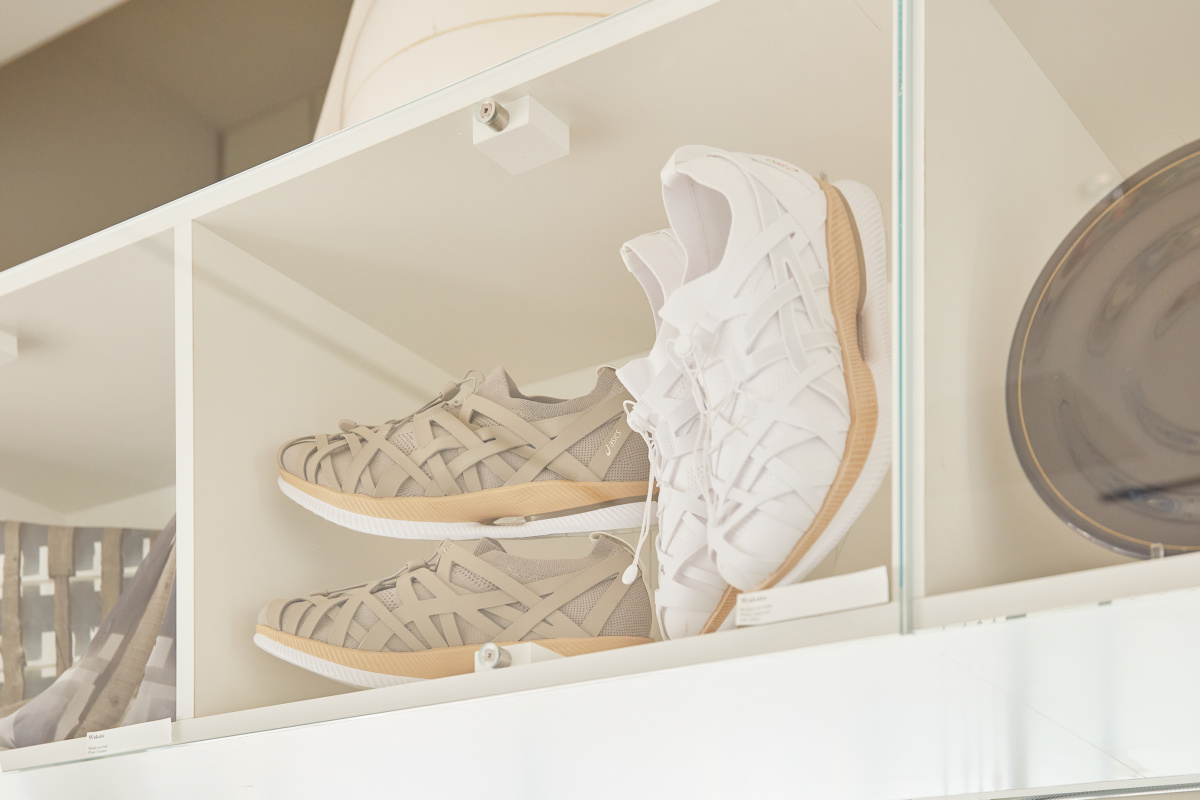
The Metaride AMU sneaker from ASICS is the smallest architectural form created by KKAA. Photo by Takahiro Idenoshito
- Wooden “threads” wrap around The Exchange in Sydney (2019). Photo by Martin Mischkulnig
- Glass lines the walls of Kengo’s studio. Photo by Takahiro Idenoshita
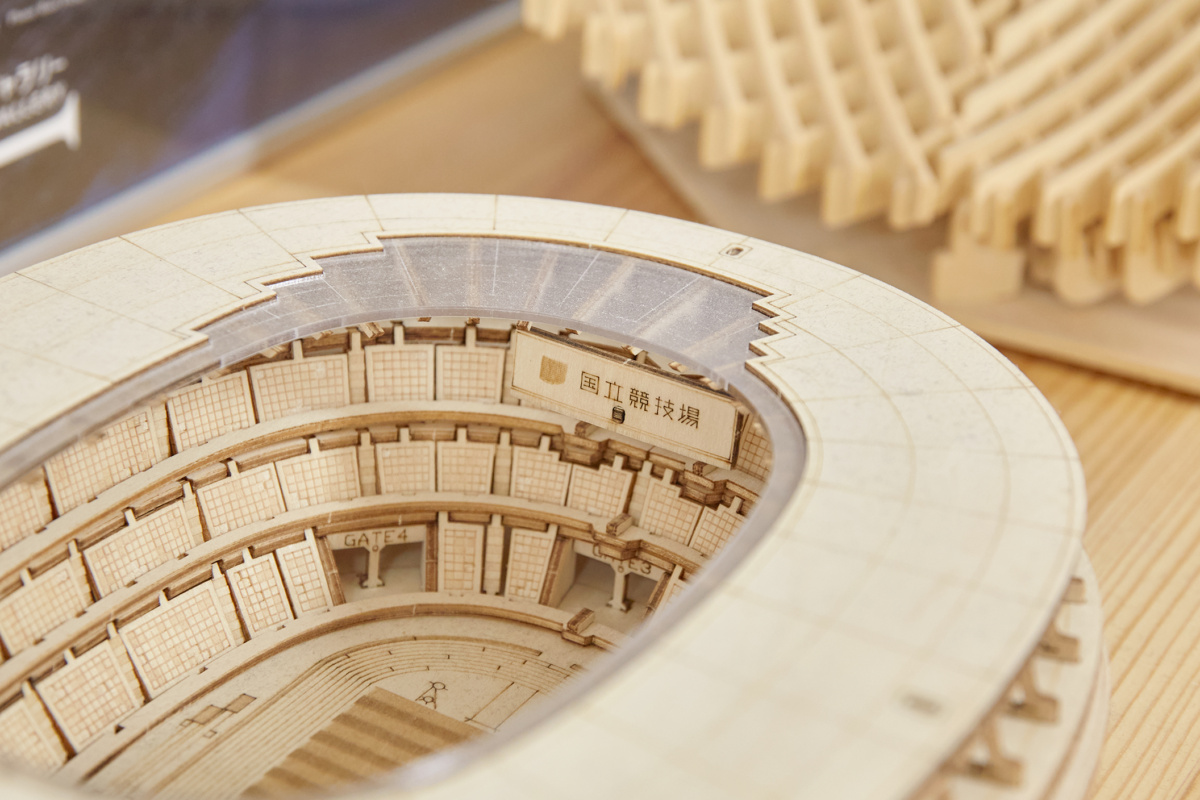
The National Stadium in Tokyo is one of Kengo Kuma’s most recognizable designs. Photo by Takahiro Idenoshita
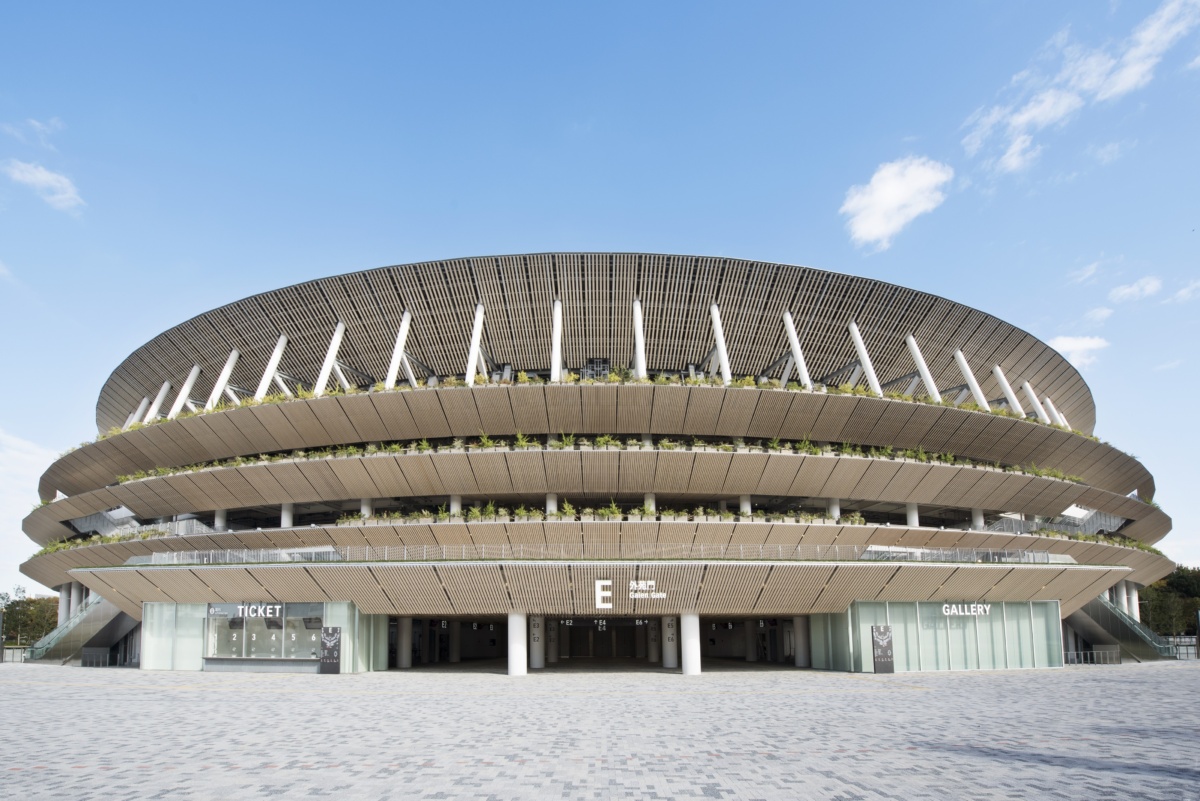
The stadium seats more than 60,000 people. Courtesy of Japan Sport Council
A version of this article originally appeared in Sixtysix Issue 09 with the headline “Kengo Kuma.” Subscribe today.

